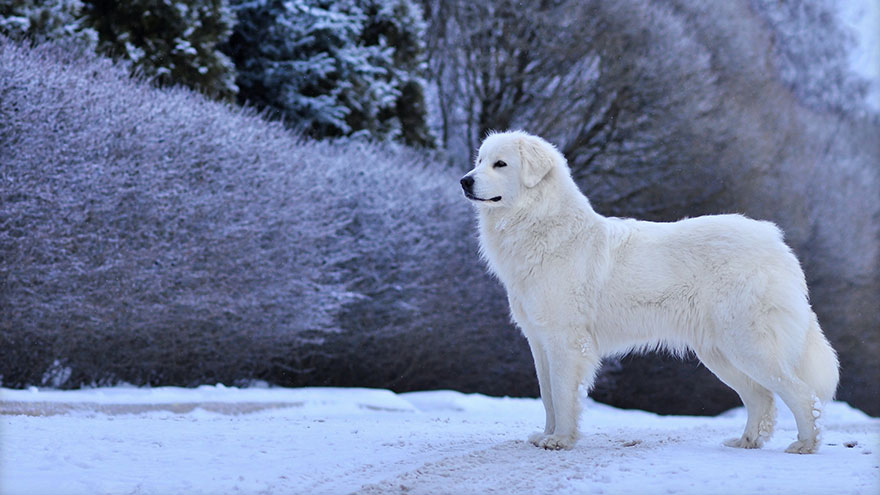Great Pyrenees Health Guide
The Great Pyrenees can be a wonderful pet in the right situation, but this breed will need a lot of room to move around since it is one of the larger dogs. A large, fenced yard would be ideal to give the Pyrenees enough exercise to keep it fit and trim.
It may be best not to allow your Great Pyrenees to run free away from home or in the park because this is a very protective animal that was bred as a guard dog for both sheep and the home.
In fact, a Great Pyrenees can be aggressive in a situation when it feels any threat.
Health Problems in the Great Pyrenees
With that in mind, you should give your pet plenty of exercise and include training and games in the daily routine, to keep it healthy. The Great Pyrenees can be sensitive to heat in warmer weather because of the thick, soft undercoat and coarse outer coat so be sure to keep plenty of water available and let the dog rest in the shade when out of doors.
The Great Pyrenees, like many larger, purebred dogs, is prone to hip dysplasia, a degenerative joint disease related to arthritis. As you visit breeders when you are looking for a puppy, be sure to ask about this and make sure that any young dog you choose has been OFA certified as free from the symptoms that lead to hip dysplasia.
If this develops later in the dog’s life, it can lead to pain and restricted movement. There are some medications available to help with the symptoms, but if the condition becomes serious, surgery may be the only answer other than humane euthanasia
Proper diet and prevention of medical problems is always the best course to follow. We recommend that you talk with your breeder and your veterinarian about the right way to feed your Great Pyrenees. You may be able to follow the breeders program from the time your dog is a puppy until he grows to full size.

Many experienced owners feed only lean, fresh meats and some vegetables, similar to what they bring home from the store for themselves. However, there are some limitations to what many dogs can eat on a regular basis as well.
Dogs are often allergic to grains in low-cost commercial food, causing the development of serious breathing and skin problems over time. Larger dogs are also prone to bloat, in which stomach contents become trapped and do not pass through the intestines. This specific condition often leads to a serious medical situation for your Great Pyrenees. For this reason, we suggest feeding smaller amounts multiple times during the day to prevent the dog from gulping large amounts of food.
One area that some owners pay attention to with the Great Pyrenees and other dogs of similar build is the ears. Cleaning the ears on a regular basis and a brief inspection occasionally can head off many problems.
For instance, wax buildup can be annoying and uncomfortable for the pet, but things such as bacteria and yeast can cause more discomfort and even some pain if not taken care of properly.
The Great Pyrenees, being such a large dog, does not generally live longer than about 10 years. Keep in mind that with proper feeding and regular exercise, you can expect to have years of enjoyment with this impressive, beautiful breed.
Read More About Great Pyrenees
- Great Pyrenees Breed Information
- Great Pyrenees : 10 Most Common Questions
- Great Pyrenees Training Guide
- Owning a Great Pyrenees : Breeder Recommendations

